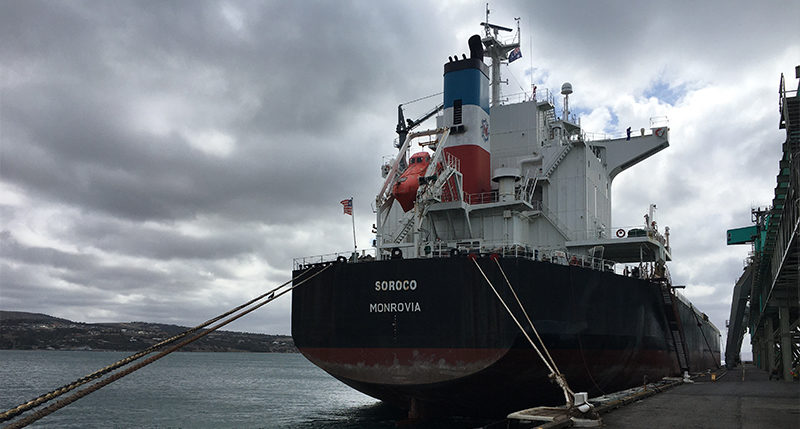PARKSIDE, SOUTH AUSTRALIA, AUSTRALIA — Viterra’s Port Lincoln terminal has loaded one million tonnes of grain onto vessels for this season since November.
The one millionth tonne was loaded onto a 56,000 tonne shipment of barley.
James Murray, chief operations officer of Viterra, said the achievement is a credit to Viterra’s employees who have done an outstanding job to safely and efficiently load the huge amount of grain during this busy time.
“We are experiencing continuous demand for grain from the Viterra system and outturning through all of our supply chains,” Murray said.“ Our Port Lincoln terminal can load around 75,000 tonnes onto a vessel in three days — with loading rates of up to 3,000 tonnes per hour. This provides significant value to the industry.”
According to Viterra, the natural deep sea port at Port Lincoln is a key export terminal in South Australia, with multiple exporters shipping a range of commodities to domestic and international destinations.
“It is a key asset in our network, which is demonstrated through Viterra’s significant investment into the Port Lincoln site, including $6 million late last year,” Murray said. “This has formed part of Viterra’s A$15 million in capital expenditure into the site over the last three years, with a further A$3.8 million planned for this year to ensure the site can continue to provide a high level of service to local growers as well as meeting shipping demand from buyer customers.”
Viterra’s sites continue to outturn grain with more than 2.5 million tonnes outturned since October last year.
“There are around 40 buyers in the Viterra system purchasing grain for a number of domestic and international markets, which gives growers the benefit of having greater options when they choose to sell their grain,” Murray said.
During March, Viterra experienced its busiest month of shipping for the season, with 442,000 tonnes of grain loaded onto vessels at its Port Lincoln, Thevenard, Port Giles and Wallaroo port terminals.
Viterra also loaded two 100-wagon trains last month, with wagons for each train split across three different sites to load simultaneously to fill them efficiently.
“These trains were effectively double the size of a typical rail movement,” Murray said. “We are outturning by road and rail to more than 100 different end use destinations across the country plus we have a large number of train movements transporting grain from our upcountry sites to port terminals for shipping.
“We continue to experience significant demand and all of our modes of outturning are in full swing, including container packing and by truck, as we send grain to multiple end-users in different domestic and export markets.”




